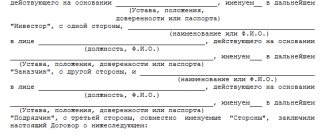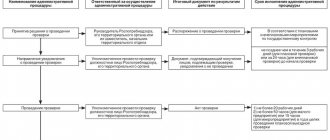Medical marijuana stock ETF.
Do you want to invest in a new and market with huge potential? There are more than a dozen medical cannabis companies trading on the US stock market, and you can’t decide which company is yours?
Don't rack your brains, buy everything at once! Then you definitely can't go wrong. This is the first marijuana ETF to include Canada's 10 largest cannabis producers, which analysts say will grow exponentially in the coming years following the legalization of marijuana in the United States at the state level. In addition, some countries have legalized marijuana and use it not only for medical purposes - the Netherlands, Germany, Spain, France.
A nice bonus is that this ETF also pays good dividends - 5.62%
- ETFMG Alternative Harvest ETF (MJ) – the price of one share is $16.7, the fund commission is 0.75%, and the dividend yield is 5.62%.
Opening and registration of a fund to raise money
First of all, a charitable foundation must be registered. Basically, a public organization, foundation or institution is used as a form of registration. The founders of the fund can be either ordinary citizens (individuals) or organizations (legal entities).
Package of documents for registering a charitable foundation:
- Founder's application in form P11001.
- Receipt for payment of state duty (it is 4,000 rubles).
- Constituent documentation.
- Decision on creating a fund.
- Information about the founders.
- A document with the address assigned to the fund.
A charitable foundation is usually a non-profit organization, so information about its registration must be submitted to the Ministry of Justice, and not to the tax office. It is Justice that oversees the work of non-profit institutions.
However, the foundation can also engage in entrepreneurship on the basis of the charter of a commercial organization and permission from the Federal Law “On Charitable Activities”. You can create an OJSC or LLC. But the possibilities for generating income are still limited - 80% of the income will be transferred to financial assistance to those in need. The decision to register a commercial charitable foundation is made by the tax office.
The legislation insists on the creation of two bodies in a charitable organization: executive and collegial, and the charter must clearly delimit their responsibilities.
The distribution of donations in the fund's account is carried out by the board of trustees. It consists of permanent philanthropic partners, founders and other people interested in the work of the foundation. You can often see the names of famous actors, singers, and show business figures on boards of trustees.
Fixed assets classified as non-productive
The purpose of funds determines their role in the production process.
Funds intended to have a direct impact not on the production process itself, but in one way or another to influence personnel, are considered non-productive .
Their main function is to ensure the well-being of employees, compliance with working conditions and culture, thereby indirectly increasing its efficiency. Such basic means include:
- homes;
- administrative buildings;
- cultural buildings and structures (clubs, stadiums, gyms, canteens, etc.);
- medical premises and equipment, etc.
Intangible fixed assets
Assets that are not expressed in material form, but nevertheless have a cost characteristic, constitute a special group of fixed assets of an enterprise. They are called produced assets rather than production assets .
These may include:
- expenses for exploration work (for example, during mining);
- computer software;
- Database;
- original works related to various types of art;
- scientific technologies, developments;
- any objects of intellectual property.
And now in detail
In total, I included in the list 60 funds whose founders include a commercial organization (regardless of the organizational and legal form - JSC, PJSC, LLC, etc.). I made all the conclusions based on the resulting list.
- The volume of expenses of corporate funds has been stable for the last couple of years: in 2020 – 13.9 billion rubles, in 2017 – 13.8. The growth amounted to 83.6 million rubles; and if converted into euros at the weighted average rate, then a decrease of 21.7 million euros.
- The largest corporate funds include 23 funds (38%). Their expenses in 2020 were more than 100 million rubles. Another 24 funds (40%) had expenses ranging from 10 to 100 million. The most “generous” corporate funds (2018) are the Pochet Charitable Foundation (4.2 billion), the Center for Social Programs (985 million), and the Renova funds ( 901) and Tatneft (827).
- In 2020, compared to 2017, expenses of the Lukoil (-681 million rubles) and Renova (-244) funds decreased noticeably. There was a noticeable increase in the Tatneft (+400) and Evraza – Siberia (+384) funds.
- 31 corporate funds (52%) are registered in Moscow and the Moscow region; 4 funds - in the Sverdlovsk region, 3 - in the Vologda region, 2 funds each - in St. Petersburg, Krasnoyarsk Territory, Novosibirsk Region, and the Republic of Tatarstan.
- Expenses of Moscow corporate funds in 2020 amounted to 9.3 billion rubles, which is 67% of total expenses.
- 7 corporate funds appear as fundraising in the Rusfond database - “Investment in the Future”, “Generation Auchan”, “Road to Home”, “OMK-Participation”, “Beautiful Children in a Beautiful World”, “Under the Star of Hope” and “Protek” . It is possible that a number of funds included company and/or client funds in fundraising.
- According to the “Open Nonprofit Organizations” resource, 8 corporate funds during 2017-2019. received government funds, including through participation in competitions of the Presidential Grants Fund. Perhaps receiving a “presidential” grant is not always seen as attracting additional funds, but as a sign of the quality of the company’s charitable programs. For example, the largest corporate fund, the Center for Social Programs, has such experience.
- The beneficiaries of the funds are often exclusively company employees, including former ones. There are also funds that work for a wider range of beneficiaries, regions of the company’s presence.
What are investment funds and what are their functions?
Surely you have already heard or seen the abbreviation “unit investment fund” in articles on financial topics. So, it is about mutual funds - Mutual Investment Funds - that we will talk today.
In a broad sense, investment funds are forms of collective investment, property complexes with different structures.
Funds are joint-stock companies or organizations with shared ownership of participants, which are united by a common essence - collective ownership of assets.
A few words about why mutual funds are needed in general. Their long-term and priority goal is to preserve and increase the capital of participants.
The existence of investment companies is due to the fact that a large number of citizens with savings do not always have the skills to invest funds competently. During the period of economic stabilization, the number of funds increases; during a crisis, the activity of such organizations declines.
The fund's operation scheme is extremely simple:
- participants (shareholders) contribute their share to the common pot;
- managers invest money in promising financial projects (securities, real estate, gold, venture funds, etc.);
- the profit received from turnover is distributed among shareholders according to the contributed shares.
Mutual investments are classified as highly liquid assets. A participant can realize (sell) his share at any time if he considers that it is profitable or he simply needs cash.
Another plus is that investors’ funds are managed by professionals, which significantly reduces financial risks. Managers know which investment areas are most profitable at the moment and use their skills in successful financial investments.
The average investor often does not have the time, knowledge, or abilities for competent financial management. Therefore, a professional player takes care of increasing the welfare of shareholders.
To better understand the principle of operation of mutual funds, I will give a clear example.
Example
Ten friends decided to start farming and purchased a large plot of land. To ensure that resources are used with maximum efficiency, they hire an experienced farmer who is skilled in agricultural work.
In the fall they harvest. They give approximately a tenth of the harvest (or profit from its sale) to the farmer, and divide the rest among themselves. The more effective the specialist’s work, the more both the owners and the farmer himself will receive. This is how mutual funds work.
Management companies are vitally interested in the proper placement of capital, because the size of their remuneration directly depends on this: they receive commissions on profits.
Let's list the main advantages of investment funds:
- professional asset management;
- diversification of deposits – risks are reduced by investing in different investment instruments;
- minimal costs for financial transactions;
- transparent internal structure;
- large joint capital brings more profit than small individual deposits.
And a small fly in the ointment: mutual funds do not guarantee mandatory income for their participants. As with any other investment transaction, there is a risk of loss of funds associated with unsuccessful investments, market declines and other objective factors.
And although the activities of the funds are controlled by the state (in particular, the FCSM - the Federal Securities Market Commission), there are no legal requirements regarding the profitability of such structures.
Read an overview article about investing in Russia.
Investing in real estate funds: benefits and risks
Against the backdrop of declining returns on deposits, Russians are looking for alternative ways to invest money. Real estate funds are one option. The down payment starts from several thousand rubles. Profitability is provided by rental payments from real estate
Photo: Stanislav Krasilnikov/TASS
Russians love to invest in real estate, but now, in addition to their four walls, they also invest in real estate funds. Recently, one of these funds was launched by the developer PNK Group. The company expects the yield to be 11.5% per annum. Industrial real estate objects were purchased with the fund's money: warehouses, distribution centers, production facilities. Such facilities are used by both regular stores and online platforms, so even during the pandemic, the demand for these spaces has remained.
Such funds are very common in the United States, where the yield ranges from 3% to 7% in dollars, and it greatly depends on what kind of real estate the fund buys, says Maxim Shein, chief investment strategist at BCS Broker.
Maxim Shein Chief Investment Strategist, BCS Broker “Each fund has its own specialization. Some people focus on residential real estate, for example, in Manhattan. Some people rely on commercial real estate: warehouses or logistics centers. Or now very popular are real estate funds that have premises where network equipment for cloud computing is located. All income that these funds receive from the operation of real estate, from tenants, and so on, is distributed among the participants of this fund.”
There are about 304 such funds in Russia, but only 158 of them are available to unqualified investors. The rest are only for professionals. The most popular are commercial real estate funds. Those funds where premises are rented out for food retail are in particular demand, comments Aktivo Deputy Commercial Director Polina Evseeva.
Polina Evseeva, Deputy Commercial Director of Aktivo “We have an average return of 15-17%, it is achieved through rental payment rates and indexation of these payments. They differ in the objects within the funds, that is, their own fund is created for each object. Our main focus is street retail, food, and related products. As for food, due to the pandemic, many tenants even pay an additional percentage of their turnover, which means their traffic has not decreased.”
Private investors should also remember about the risks: such investments are not insured like deposits, and the profitability depends on the demand for real estate purchased by the fund. Before investing, it is better to make sure that a particular property has a tenant and a long-term contract.
Add BFM.ru to your news sources?











